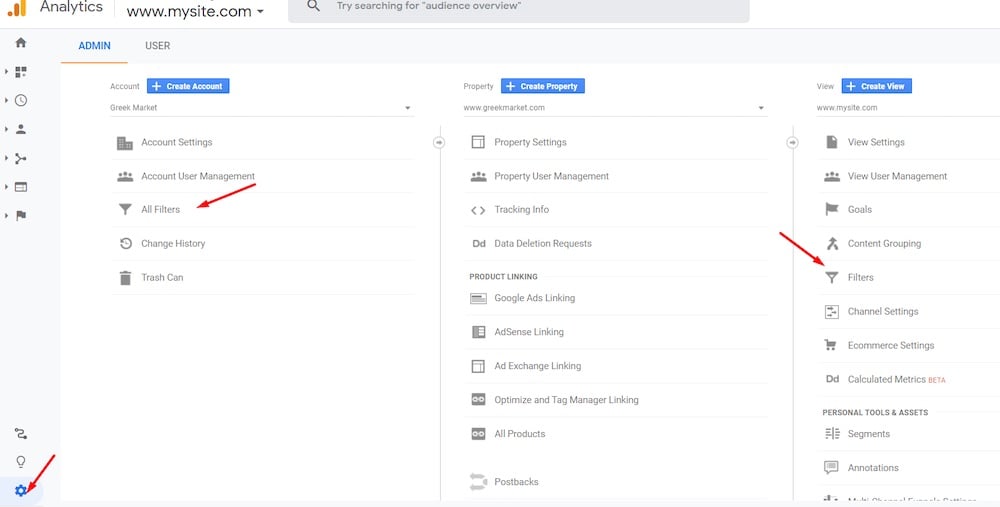Examine This Report on In Which Order Does Google Analytics Filter Data
Table of ContentsSome Known Details About In Which Order Does Google Analytics Filter Data In Which Order Does Google Analytics Filter Data for DummiesThe Definitive Guide for In Which Order Does Google Analytics Filter DataThe 2-Minute Rule for In Which Order Does Google Analytics Filter DataSome Known Factual Statements About In Which Order Does Google Analytics Filter Data A Biased View of In Which Order Does Google Analytics Filter Data
io" is the internet site and also if I most likely to the homepage and click some various other pages like signup page, it reveals me in the real-time record popping-up as how we established in the filters. This web page is the of internet site and you can see the sub-domain highlighted as.
Comparable to the previous process, we have to produce a brand-new filter as pointed out in the last steps - In Which Order Does Google Analytics Filter Data. in this new filter, I'm calling it as and also I'm selecting Then I'm inputting the filter pattern as In this filter pattern, the pipe symbol () is included to connect any other hostname that you want to consist of along with the other hostnames
The 10-Second Trick For In Which Order Does Google Analytics Filter Data
This is exactly how you can go inspect your website as well as return sight in real-time reports. The real-time report currently reveals the adjustments that you made when creating that filter. In this case, the Fractured web page clarifies concerning link of the page i. e when the Web page link being duplicated the very same, excluding reduce or any kind of minute elements.
Currently create a new filter as well as I name it as. Pick and also select the filter areas.

More About In Which Order Does Google Analytics Filter Data
The adhering to guidelines will stroll you through the process: Produce a brand-new Google Spread sheet (or open an existing one). From the food selection bar pick: Add-ons > Get Add-ons Discover the Google Analytics Attachment from the attachments gallery as well as choose it. From the add-on summary page, click the "+" in the top right edge to include this add-on to your spread sheet.
Records can be developed manually or with the help of the add-on's report production tool. To utilize the tool, choose "Add-ons" > "Google Analytics" > "Develop a New Report" from the food selection bar.
The tool is meant to help get you started and give you with the info you may not understand off the top of your head. The rest of the fields will certainly need to be entered by you.
See This Report about In Which Order Does Google Analytics Filter Data
It can be a sheet in the spreadsheet you're presently in, or a different spreadsheet entirely (as long as you have edit accessibility to that spreadsheet). To official site print the results to a various spreadsheet duplicate the spread sheet URL and paste it into the cell to the right of the "spreadsheet-url" parameter.
This opens up a report organizing dialog where you can turn scheduling on and off, as well as establish exactly how regularly your report will certainly run. To turn scheduling on, check package classified "Enable reports to run immediately." As soon as organizing is allowed you can utilize the pick dropdown to control the time as well as regularity.
When organizing records, see to it there is a lot of time in between when you develop the routine as well as when the routine is intended to run. If why not try here it's also near to the very first occurrence of the scheduled time, there's a possibility those records will be postponed till the next occurrence. It's typically best to leave at the very least a one-hour buffer.
In Which Order Does Google Analytics Filter Data Can Be Fun For Everyone
Concealed parameters are sophisticated choices that are not required for the majority of records and also are hidden by default. You can make use of these criteria by un-hiding the rows 14-16 in the Record Configuration sheet. Call Description This is the record name. It will certainly also be the name of the sheet where the report data is created.
For instance, the following expression returns the last day of the previous month: =EOMONTH(TODAY(), -1) Completion date for bring Analytics data. Demands can specify an end date formatted as YYYY-MM-DD, or as a relative date (e. g., today, the other day, or Ndays, Ago where N is a favorable integer). You can likewise use Sheets date features to define this value programmatically.
Metrics can be specified in one of two layouts: For instance, every one of the following stand values for the Metrics specification. ga: sessions, ga: bounces ga: sessions ga: bounces ["expression": "ga: sessions/ga: customers", "pen name": "Sessions per Individual", "format, Type": "FLOAT", "expression": "ga: overall, Events/ga: pageviews", "pen name": "Occasions per Pageview", "format, click here now Type": "DRIFT"] For many use cases, a checklist of metric IDs is the easiest means to specify the Metrics specification.
Get This Report about In Which Order Does Google Analytics Filter Data
Call Description A list of dimensions to quiz. Dimensions can be defined in one of two layouts: For example, all of the complying with are valid values for the Metrics criterion. For the majority of make use of instances, a listing of measurement IDs is the easiest means to specify the Dimensions criterion.